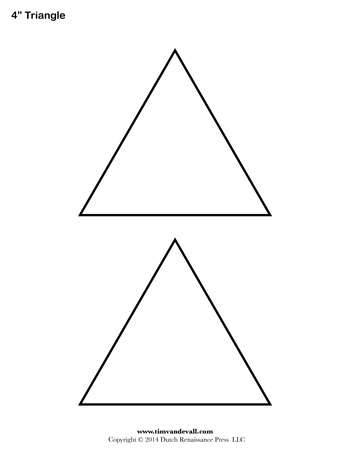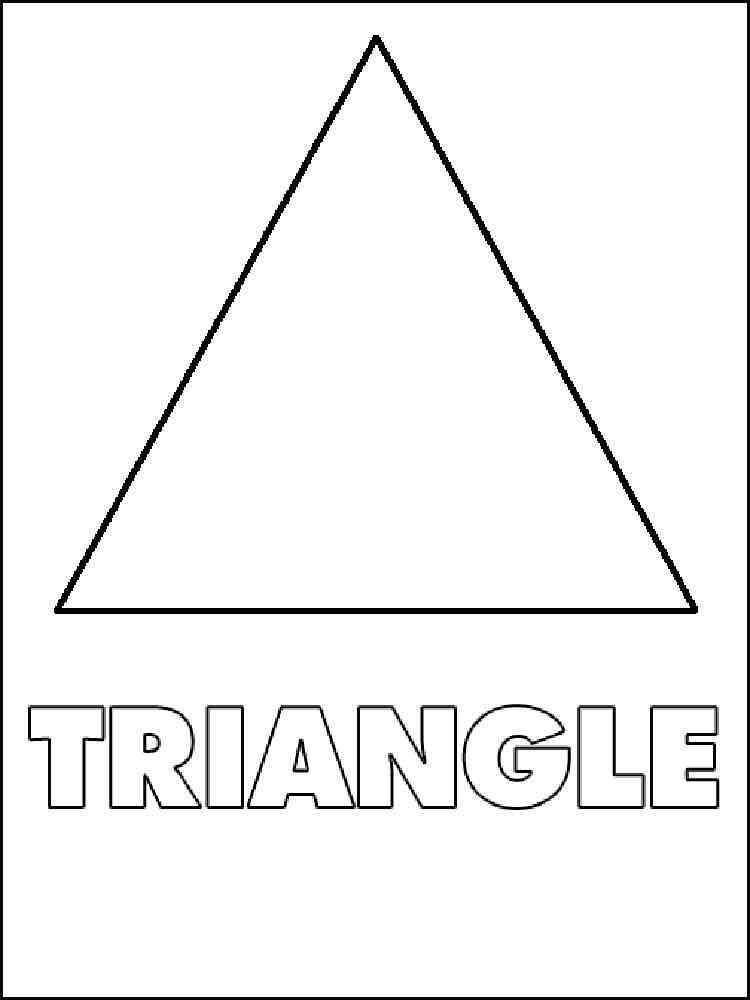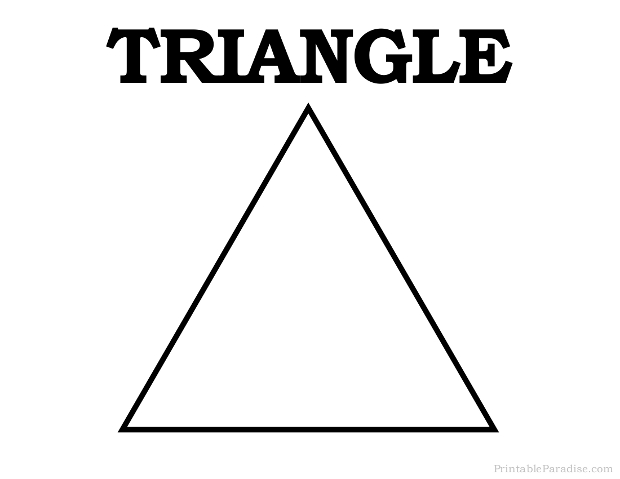Triangles are a fascinating shape. They are the simplest of all polygons as their formation involves only three sides and three angles. In geometry, triangles are referred to as a three-sided polygon. Triangles come in different shapes and sizes, and each type has a unique set of properties and applications. In this post, we’ll explore different types of triangles, their properties, and some fun coloring pages for kids.
Equilateral Triangle
Let’s start with the equilateral triangle. This is a type of triangle whose sides are all the same length, and each angle measures 60 degrees. It is the only regular polygon with three sides. In other words, an equilateral triangle is also an equiangular triangle, with all angles measuring 60 degrees.
 The equilateral triangle is often used in construction, engineering, and architecture due to its even distribution of weight and strength. It is also commonly found in nature, such as in the honeycomb pattern made by bees.
The equilateral triangle is often used in construction, engineering, and architecture due to its even distribution of weight and strength. It is also commonly found in nature, such as in the honeycomb pattern made by bees.
Isosceles Triangle
The isosceles triangle is a triangle that has two sides of equal length and two equal angles. The angle opposite the equal sides is called the vertex angle, while the other two angles are called the base angles. In an isosceles triangle, the vertex angle is always different from the base angles.
 The isosceles triangle is an essential shape in mathematics and engineering, as it helps to measure angles and distances. It also plays a crucial role in the field of physics, such as in the laws of reflection and refraction of light.
The isosceles triangle is an essential shape in mathematics and engineering, as it helps to measure angles and distances. It also plays a crucial role in the field of physics, such as in the laws of reflection and refraction of light.
Scalene Triangle
A scalene triangle is a triangle in which all three sides are of different lengths and all three angles are different. The scalene triangle is quite common in nature, such as in leaves or animal horns.
 The scalene triangle is also important in the field of mathematics and science, as it helps in the measurement of angles and distances. It is often used in the study of trigonometry as well.
The scalene triangle is also important in the field of mathematics and science, as it helps in the measurement of angles and distances. It is often used in the study of trigonometry as well.
Right Triangle
A right triangle, as the name suggests, has one angle that measures 90 degrees. The side opposite the right angle is called the hypotenuse, while the other two sides are called the legs. The Pythagorean theorem, one of the most fundamental theorems in geometry, relates to the sides of a right triangle.
 The right triangle is used in various applications, such as in construction, engineering, and even in navigation. It is also used in the field of physics, such as in the calculation of vectors and forces.
The right triangle is used in various applications, such as in construction, engineering, and even in navigation. It is also used in the field of physics, such as in the calculation of vectors and forces.
Fun Coloring Pages
Now that we’ve explored different types of triangles let’s take a look at some fun coloring pages that kids can enjoy. Coloring is a fun activity that can help improve fine motor skills and color recognition. It is also a great way to introduce children to different shapes and patterns.
Free Printable Triangle Shape - Freebie Finding Mom
 This coloring page features a simple yet creative design of an equilateral triangle. It is perfect for preschoolers or young children who are just starting to learn about shapes and colors.
This coloring page features a simple yet creative design of an equilateral triangle. It is perfect for preschoolers or young children who are just starting to learn about shapes and colors.
Triangle Coloring Pages | Coloring pages to download and print
 These coloring pages feature various types of triangles, including the equilateral, isosceles, and scalene triangles. Children can learn about the different properties and features of each triangle while creating their own masterpiece.
These coloring pages feature various types of triangles, including the equilateral, isosceles, and scalene triangles. Children can learn about the different properties and features of each triangle while creating their own masterpiece.
Printable Triangle Shape - Print Free Triangle Shape
 This coloring page features a unique design of a triangle shape with various patterns inside. It is perfect for older children who enjoy more intricate patterns and designs.
This coloring page features a unique design of a triangle shape with various patterns inside. It is perfect for older children who enjoy more intricate patterns and designs.
Triangle Templates - 4 Inch - Tim’s Printables
 This coloring page features templates of different types of triangles, including the equilateral, isosceles, and scalene triangles. Children can use these templates to create their own unique designs and patterns.
This coloring page features templates of different types of triangles, including the equilateral, isosceles, and scalene triangles. Children can use these templates to create their own unique designs and patterns.
Conclusion
Triangles are a fascinating shape that plays a crucial role in various fields, including mathematics, science, engineering, and physics. Each type of triangle has its unique properties and applications. By exploring these different types of triangles and using them in various coloring pages, children can develop their fine motor skills, color recognition, and creativity.